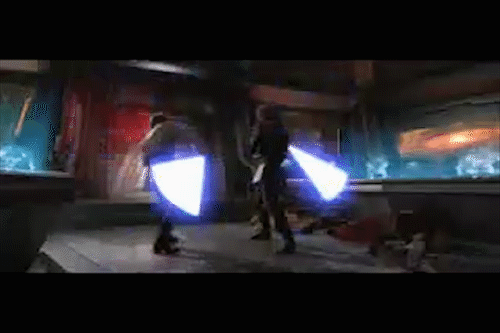PorkyThePaladin
Arcane
- Joined
- Dec 17, 2013
- Messages
- 5,182
I was thinking about what I don't like about melee turn based combat (swordplay for example), and one big issue is that in turn based systems, actions take place in a vacuum. What do I mean by that?
Imagine an actual sword fight. All the attacks and defenses are interconnected. If one of the combatants attacks, the other will typically respond in the middle of the attack, by parrying for example. The first combatant can then respond to that, by adjusting his attack or following up with another, and so on.
This works similarly in real time combat systems, but in turn based systems, each action is in its own turn, so when combatant A performs an action, combatant B can do nothing. The action takes place in a vacuum. Then, the situation reverses, and combatant B makes his move also in a vacuum.
For ranged combat (guns for example) it's not a big deal, since bullets fly so fast, it doesn't really change the dynamics, but for melee combat, it changes everything in a bad way.
What makes any kind of melee combat (whether swords, martial arts, spear and shield, whatever) interesting and deep is the interconnected nature of it. One party does something, the other reacts to counter that and do something on its own behalf, then the first party tries to counter. So there is this rich back and forth of actions, tactical counters, other actions, other counters. This is particularly important for RPGs, because these games have a low number of characters (1-6 typically), so the tactics must come not from managing a large number of units, but from the tactical options available to the units.
Now, you CAN have tactics and interconnectedness to some degree even with actions in a vacuum (e.g. if that guy is super dodgy, let me hit him with ability first to lower his dodginess, and then follow up with regular attacks) but it seems to me that this leads to a much lower level of tactics and interesting interactions. This is why turn based melee combat generally devolves into a turn based version of spamming - units just exchange attacks whittling down each other's hitpoints, until one wins.
So, what's my solution? I think turn based combat systems involving melee combat could benefit from breaking down actions into partial actions. Instead of having a single attack take 1 turn, how about making the attack consist of 2-3 parts, each of which takes a turn. For example, part 1 would be wind-up (which could transition into several differnt things), part 2 would be release, and part 3 would be the actual directional cut. So during each step, the other party would have a chance to respond with its own defensive/offensive moves (also taking time). There would be almost chess-like analysis involved, because at every step, each party would have to think about all the possible next moves, and try to pick somethng that works given any of them.
Opinions?
Imagine an actual sword fight. All the attacks and defenses are interconnected. If one of the combatants attacks, the other will typically respond in the middle of the attack, by parrying for example. The first combatant can then respond to that, by adjusting his attack or following up with another, and so on.
This works similarly in real time combat systems, but in turn based systems, each action is in its own turn, so when combatant A performs an action, combatant B can do nothing. The action takes place in a vacuum. Then, the situation reverses, and combatant B makes his move also in a vacuum.
For ranged combat (guns for example) it's not a big deal, since bullets fly so fast, it doesn't really change the dynamics, but for melee combat, it changes everything in a bad way.
What makes any kind of melee combat (whether swords, martial arts, spear and shield, whatever) interesting and deep is the interconnected nature of it. One party does something, the other reacts to counter that and do something on its own behalf, then the first party tries to counter. So there is this rich back and forth of actions, tactical counters, other actions, other counters. This is particularly important for RPGs, because these games have a low number of characters (1-6 typically), so the tactics must come not from managing a large number of units, but from the tactical options available to the units.
Now, you CAN have tactics and interconnectedness to some degree even with actions in a vacuum (e.g. if that guy is super dodgy, let me hit him with ability first to lower his dodginess, and then follow up with regular attacks) but it seems to me that this leads to a much lower level of tactics and interesting interactions. This is why turn based melee combat generally devolves into a turn based version of spamming - units just exchange attacks whittling down each other's hitpoints, until one wins.
So, what's my solution? I think turn based combat systems involving melee combat could benefit from breaking down actions into partial actions. Instead of having a single attack take 1 turn, how about making the attack consist of 2-3 parts, each of which takes a turn. For example, part 1 would be wind-up (which could transition into several differnt things), part 2 would be release, and part 3 would be the actual directional cut. So during each step, the other party would have a chance to respond with its own defensive/offensive moves (also taking time). There would be almost chess-like analysis involved, because at every step, each party would have to think about all the possible next moves, and try to pick somethng that works given any of them.
Opinions?


















